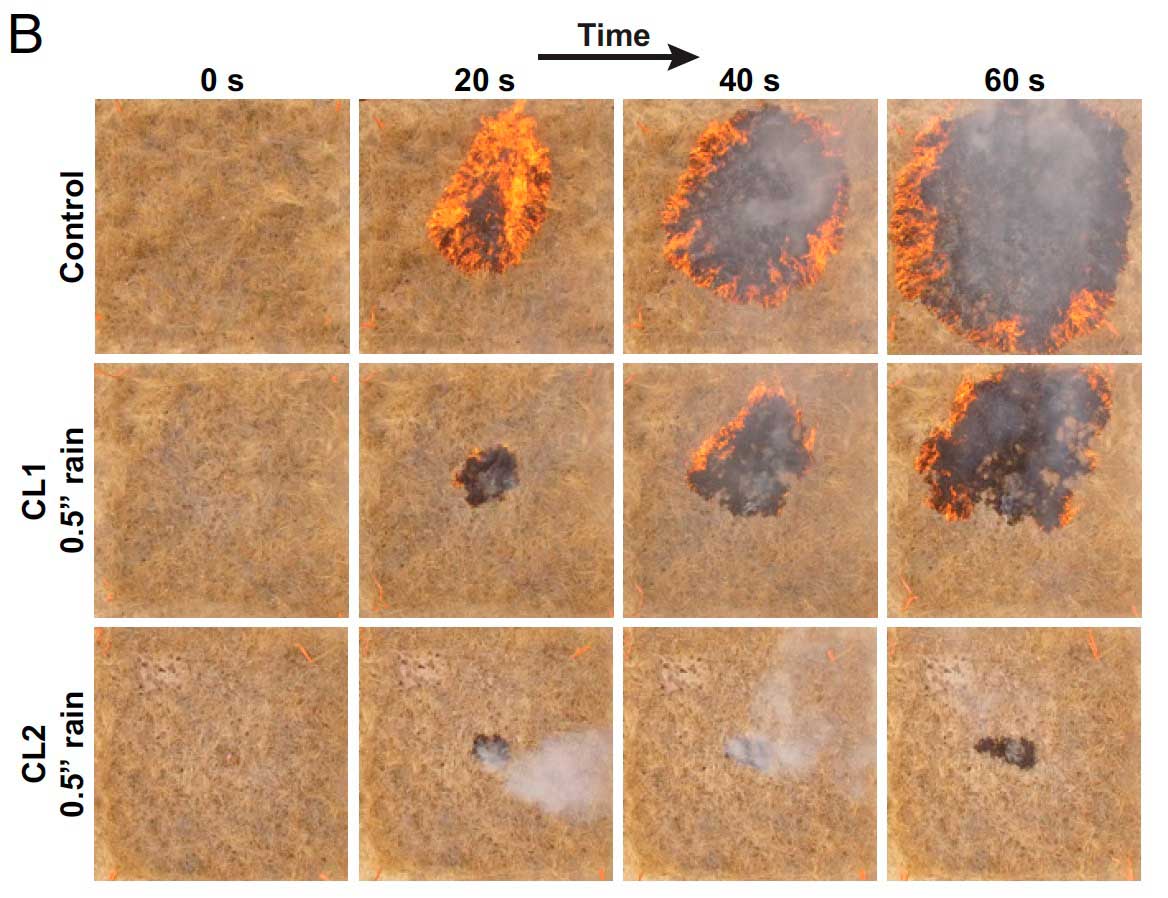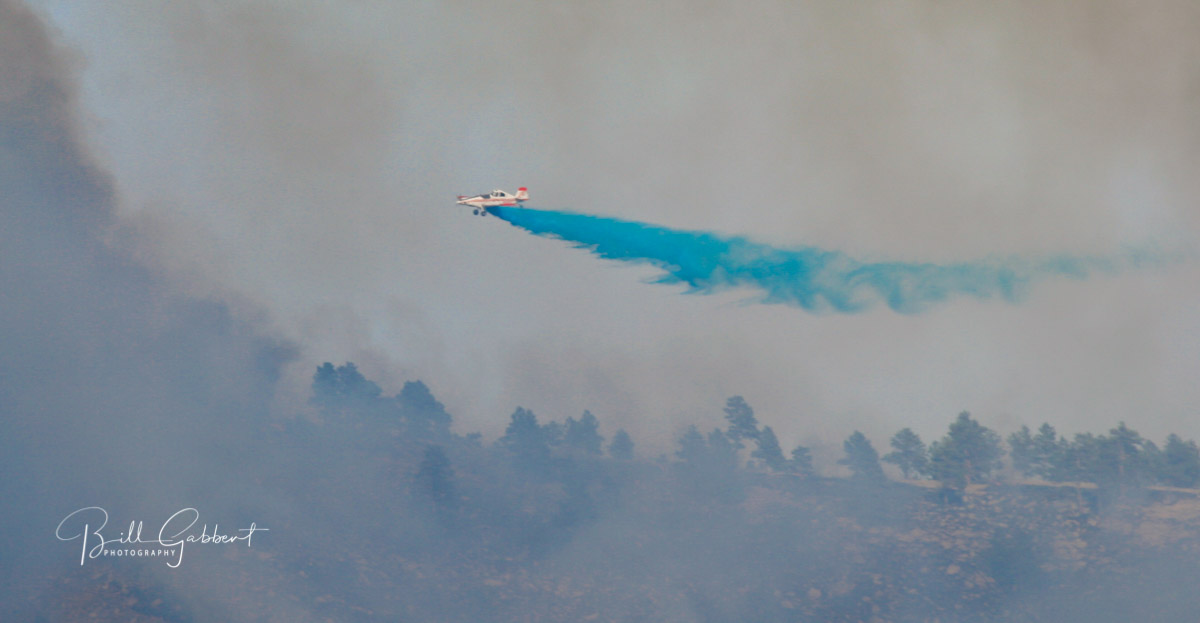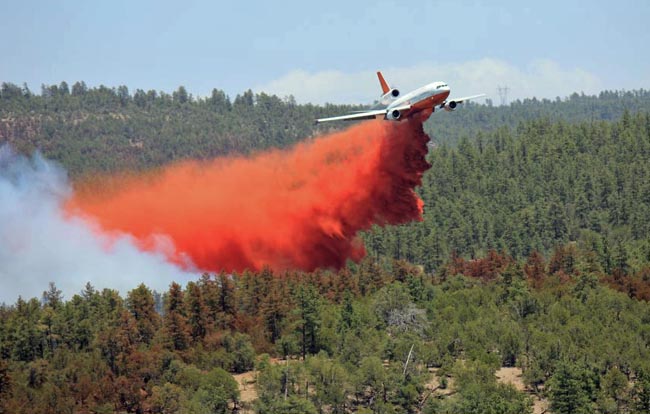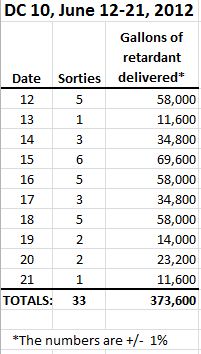
A group of scientists and engineers have developed a new fire retarding chemical, actually a gel in this case, that they say can be effective for months after being applied to vegetation.
The millions of gallons of red fire retardant that air tankers drop every year is usually made from ammonium phosphate or its derivatives. It has been called “long term fire retardant” because even after it dries, the chemical can interfere with the combustion process and may still retard the spread of a vegetation fire to a limited degree. However research and experience in the field has shown some formulations can be toxic to fish.
Gels have been used by firefighters for several decades on structure fires occasionally on vegetation fires. The products can be more effective than plain water due to their ability to stick to a vertical surface or vegetation. Water can remain in the gel for an hour or more depending on the ambient temperature, wind, and humidity. GelTech Solutions recently received a contract from the Oregon Department of Forestry to supply a blue-colored version of FireIce HVB-Fx gel to be used in air tankers. The company says the product passed the U.S. Forest Service’s newly revised, more challenging requirements for wildland fire chemicals. But the safety data sheet for the product says, “Titanium dioxide [a component of the product] has been classified by IARC as a possible carcinogen to humans (Group 2B) through inhalation of particulate dust.” The safety data sheet goes on to say, “This classification is based on inadequate evidence for carcinogenicity in humans, but sufficient evidence of carcinogenicity in animals (rats). It should be noted that recent studies have demonstrated that the rat may be particularly sensitive to high levels of toxicity dusts such as titanium dioxide. Epidemiology studies do not suggest an increased risk of cancer in humans from occupational exposure to titanium dioxide. The conclusions of several epidemiology studies on more than 20,000 TiO2 industry workers in Europe and the USA did not suggest a carcinogenic effect of TiO2 dust on the human lung.”
This is not the first time blue gel has been used in air tankers. The photo below was taken in the Black Hills of South Dakota August 15, 2006.

The scientists who developed the new fire retarding gel that they claim has “persistent retention”qualities said their formulation is environmentally benign, nontoxic, and will “biodegrade at desired timescales.” After application, it will retain its ability to prevent fires throughout the peak fire season, even after weathering that would sweep away conventional fire retardants. The cellulose-based gel-like fluid stays on target vegetation through wind, rain and other environmental exposure, they said.
“This has the potential to make wildland firefighting much more proactive, rather than reactive,” said Eric Appel, the study’s senior author and an assistant professor of materials science and engineering.
Treating wildfire prone areas prophylactically could provide a highly targeted approach to wildfire prevention, but, until now, long-lasting materials have not been available.
The researchers have worked with the California Department of Forestry and Fire Protection (CAL FIRE) to test the retardant materials on grass and chamise — two vegetation types where fire frequently starts. They found the treatment provides complete fire protection even after half an inch of rainfall. Under the same conditions, a typical commercial retardant formulation provides little or no fire protection. The researchers are now working with the California Department of Transportation and CAL FIRE to test the material on high-risk roadside areas that are the origin of dozens of wildfires every year.
“We don’t have a tool that’s comparable to this,” said Alan Peters, a CAL FIRE division chief in San Luis Obispo who monitored some of the test burns. “It has the potential to definitely reduce the number of fires.”
The Stanford-developed treatment contains only nontoxic materials widely used in food, drug, cosmetic and agricultural products, according to the developers. The unique properties of these gel-like retardant fluids allow them to be applied using standard agricultural spraying equipment or from aircraft. It washes away slowly, providing the ability to protect treated areas against fire for months as the materials slowly degrade.
Thanks and a tip of the hat go out to Tim, Carl, and Kelly. Typos or errors, report them HERE.



